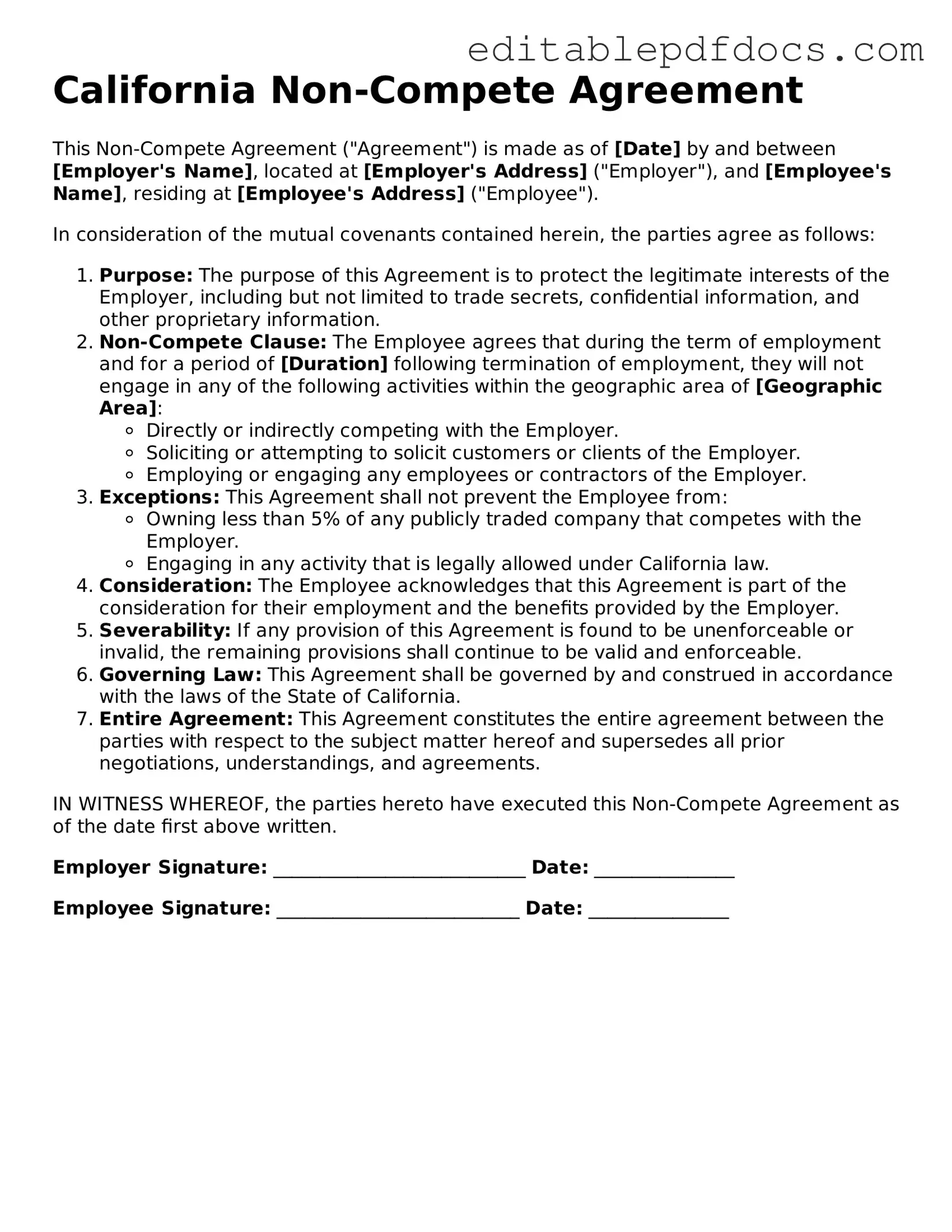When individuals complete the California Non-compete Agreement form, several common mistakes can lead to confusion and potential legal issues. Understanding these pitfalls is essential for ensuring that the agreement is valid and enforceable.
One frequent error is failing to understand the limitations of non-compete agreements in California. The state generally prohibits these agreements, except in specific situations, such as the sale of a business. Many people mistakenly believe that they can enforce a non-compete clause in any employment situation. This misunderstanding can lead to unnecessary disputes and complications.
Another mistake involves incomplete or unclear information. When filling out the form, individuals may overlook sections or provide vague answers. A well-defined agreement is crucial. If the terms are ambiguous, it can lead to misinterpretations later on. Clear definitions of terms, such as "competing business" or "geographic area," should be included to avoid confusion.
Some individuals also neglect to consider the duration of the non-compete clause. A common error is setting a duration that is either too short or too long. California courts often scrutinize the reasonableness of the duration. If it appears excessive, the agreement may be deemed unenforceable. Therefore, carefully determining a reasonable time frame is vital.
Additionally, individuals sometimes fail to seek legal advice before signing the agreement. Consulting with an attorney can provide clarity on the implications of the non-compete clause. Without professional guidance, individuals may not fully understand their rights and obligations, leading to potential legal challenges in the future.
Finally, individuals may overlook the importance of mutual agreement. Both parties must agree to the terms for the non-compete to be valid. If one party feels coerced or does not fully understand the agreement, it could be contested later. Ensuring that both parties are on the same page is essential for the agreement’s enforceability.
